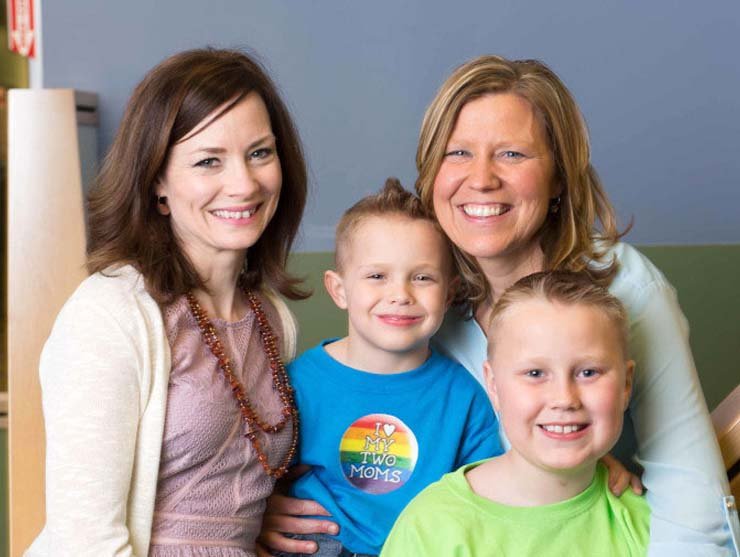Today’s Post by Kelly Fenderson-Gonzales, Bright Horizons eCDA Facilitator
I recently visited my daughter Callie’s kindergarten prep classroom, where she and her friend Mason, both 4 years old, were engaged in dramatic play. Out of the blue, Mason asked, “Why don’t you have a dad?” I was momentarily caught off guard. As an LGBTQ family, I knew this question might come up eventually, but I wasn’t expecting it so soon. Callie responded calmly, “Because I don’t. I have two moms.” Mason shrugged and said, “Okay,” and they continued playing.
It was as straightforward as that—no further questions or complications. Mason’s curiosity was met with Callie’s simple explanation, and the moment passed without any fuss. I don’t know if Mason had more questions later or if he thought about it again. But this interaction was a great chance for me to discuss family diversity with my own children. While this conversation came up naturally in our case, it might not always happen on its own. Here are some strategies for teaching your child about different family structures.

4 Ways to Teach Kids About Different Family Structures
Start with Books: Reading books that depict various family structures can be an excellent way to begin the conversation. On this occasion, I used “Who’s in a Family?” by Robert Skutch, which shows different types of families including single parents, adopted families, same-sex families, and more. There are many children’s books that explore family diversity, and they can provide a gentle introduction, especially if you’re feeling uneasy about starting the discussion.
Encourage Questions: Children’s questions about family structures are often driven by curiosity and a desire for understanding. If a child is used to a family structure that includes a mom, dad, and siblings, encountering a different type of family might naturally prompt questions. After reading a book or meeting someone with a different family setup, encourage your child to ask questions by saying, “What are you curious about?” or “What did you think about what we just read?”
Be Honest and Simple: When children ask about family differences, a straightforward answer is usually sufficient. For instance, Mason’s question about why Callie doesn’t have a dad was simply answered with, “Because I don’t. I have two moms.” Kids often just need honest, age-appropriate answers, without needing extensive explanations.
Focus on Love and Care: Regardless of how families look, the core of a family is the love and care its members provide. Emphasize that families come in many forms but are all centered around the affection and support they offer one another.
Interestingly, this brief moment from three years ago remains a unique experience in our family. My kids, now 7 and 5, occasionally express a desire to have a family structure similar to those they see, like living with grandparents. It’s a reminder that while every family is unique, the underlying theme of love and support is universal.
More on Responding to Differences
Explore ways you and your children can show respect for diverse family structures through meaningful interactions. Find strategies for addressing unexpected questions about differences with sensitivity and understanding.


